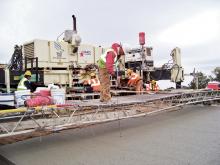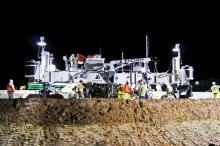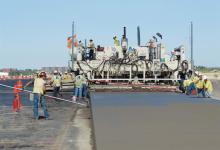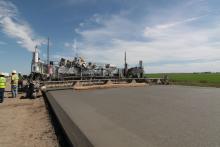Stringless concrete paving systems are easy to use for contractors - Daniel C Brown. With just a few days of training, Hawkins Construction is now up and running with stringless concrete paving technology. This year Hawkins started using the stringless technology on two Interstate highway paving projects, with a total contract value of US$78 million. The projects were on I-80 between Omaha and Lincoln, Nebraska and the first section was for a 9.25km, 18.3m wide stretch of 330mm thick concrete pavement.
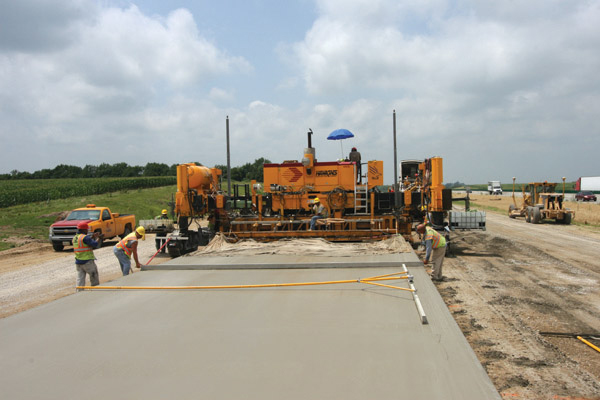
Hawkins says that the Leica geosystems stringless package fitted to its G&Z pavers is easy to use and learn
Stringless concrete paving systems are easy to use for contractors - Daniel C Brown
With just a few days of training, Hawkins Construction is now up and running with stringless concrete paving technology.This year Hawkins started using the stringless technology on two Interstate highway paving projects, with a total contract value of US$78 million. The projects were on I-80 between Omaha and Lincoln, Nebraska and the first section was for a 9.25km, 18.3m wide stretch of 330mm thick concrete pavement.
Hawkins elected to buy the NoLine Stringless Preparation Kit from manufacturer Guntert & Zimmerman to use on its G&Z pavers, an S850 and a new S600. The firm invested a substantial sum for the set-ups for two pavers, including four robotic total stations, an on-board computer/monitor and a stringless trimmer all from Leica Geosystems.
The firm decided to make the switch to stringless to improve speed efficiency, and to reduce labour costs, as well as to eliminate possible errors that occur when a truck hits a stringline or a string is otherwise broken.
The firm says its experience shows that the stringless technology improves paving production. Trucks can cycle through the site faster, as there is no vulnerable stringline for the drivers to be wary of damaging.
Hawkins paves with four robotic total stations, but only two are needed to help control the four-track paver. One total station stays behind the paver, to check the pavement surface as-built, and to do any diagnostics that might be needed for ride quality. A technician back-sights each of the three robotic total stations to three known control points.
That fixes the location of the total station relative to the digital terrain model contained in the computer on-board the paver. The total stations then read the location of the paver by viewing two prisms mounted on masts above the paver. As the prisms have a precise spatial relation to the pan of the paver, the total stations can relay location information to the on-board computer. This compares the location of the paver to the design location in the model, and makes adjustments accordingly.The performance of the stringless system has allowed the contractor to achieve better smoothness results with the stringless than with a stringline. The firm's profilograph readings show extremely low deviation and as the Nebraska Department of Transportation awards incentive payments for extra-smooth pavements, the contractor has seen substantial financial benefits from using this technology.
The pavers themselves have also proven versatile, allowing the contractor to quickly change paving widths to increments between 6-7.8m without dropping the paving kit out. A contractor can add or remove inserts to change paving widths. The tractor frame and the paving kit telescope in and out together to change widths.
Prior to paving, subcontractor Koss Construction milled the old asphalt from the underlying concrete pavement. Another subcontractor, Pink Grading, broke the concrete and graded the dirt in preparation for lime stabilisation. Hawkins stabilised the earth subgrade with lime, and Recycled Materials from Colorado crushed the old concrete on grade. A motor grader spread the crushed concrete, and Hawkins trimmed it with a stringless trimmer.
Setting up the system is quick and easy and takes just 45 minutes. The firm then backsights the robotic total stations to three known control points. Three points give a tighter resection on the total station. The total stations can calculate where they are at on the job and then relay that information to the paver. The company sets up three total stations in the morning, and a fourth one to run the check on the slab.

